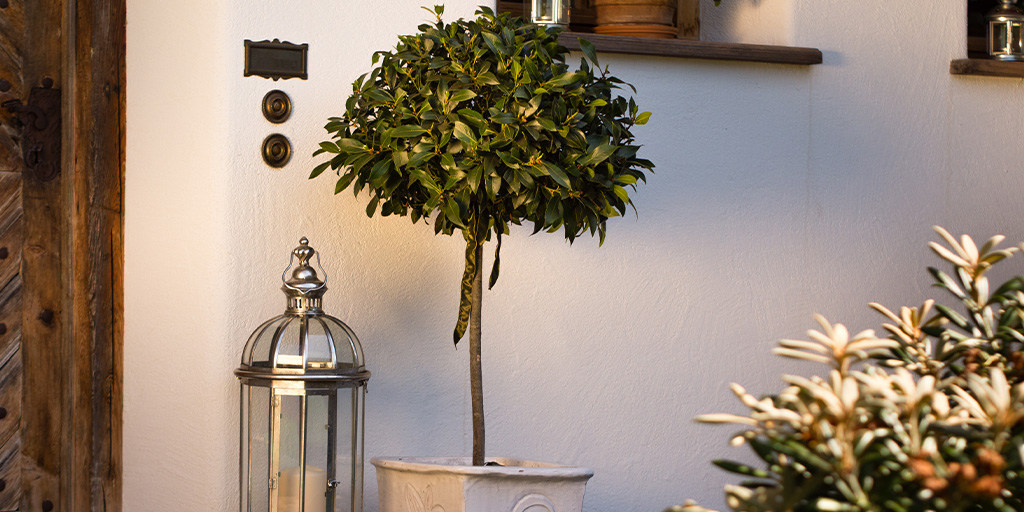
Caring for your Bay Tree
Bay trees, also known as Laurus nobilis, are popular as they are an evergreen plant that can provide year-round greenery and fragrance to a garden or indoor space. Bay trees work well in containers because they have a relatively small root system and can tolerate being root-bound to some extent. This means they can grow well in containers without becoming too large and outgrowing their space. Additionally, it allows for greater control over the soil and water conditions, which can be important for their growth and development. Container-grown bay trees can also be easily moved indoors during the winter months in colder climates, providing a versatile and convenient option for home gardeners who want to enjoy fresh bay leaves year-round.What size container and compost is ideal?
When choosing a container for your bay tree, opt for one that is around 16 inches in diameter and 18 inches deep. Bay trees have a relatively small root system and can tolerate being root-bound to some extent, but they still need enough space to grow and develop. It’s advised that you re-pot your bay tree every 2-3 years. If you do not wish to keep sizing up your pots then you can always remove a third of the roots before repotting back into the same pot you had originally.
Bay trees require well-draining soil to prevent waterlogging, which can lead to root rot. Use a high-quality potting mix with added perlite or sand to improve drainage. Make sure the soil is moist but not too wet, and avoid letting it dry out completely. A good quality compost is recommended as the plant will not be able to draw any extra nutrients from the ground due to it being housed in a container.
Some of our favourite containers for your bay trees:
- Woodlodge Heritage Edwardian Ceramic Planter
- Elho Vibia Campana Round Planter
- Elho Algarve Cilindro with invisible Wheels
How to protect bay trees in the cold weather?
Bay trees are generally hardy and can tolerate some cold weather, but they are not fully frost-tolerant. If possible, move the container to a sheltered location, such as a garage or covered porch, during periods of cold weather. This will protect the tree from harsh winds and cold temperatures. You can also cover the container with a blanket or frost cloth to help insulate the roots and protect them from freezing temperatures. If the tree suffers any cold damage, wait until the spring to prune it back. This will allow you to see the full extent of the damage and avoid further stress on the tree during the winter months.
Should I prune my bay tree?
Yes, pruning your bay tree is important to keep it healthy and looking its best. Pruning helps to promote new growth and maintain the shape and size of the tree. The best time to prune your tree will be spring or early summer, just before new growth appears. Use sharp, clean pruning shears or secateurs to make clean cuts and avoid any unnecessary damage.
Top-tip: However tempting… don’t over-prune your tree as this can weaken it and make it more susceptible to disease.
What about watering and fertilising your bay tree?
Bay trees need regular watering, especially during the growing season. Water the tree when the top inch of soil is dry, but avoid overwatering as this can cause root rot. During the winter months, water less frequently and allow the soil to dry out slightly between waterings.
As your bay tree will be living in a container, it means that you will need to give it all the necessary nutrients. Bay trees benefit from regular fertilisation, especially during the growing season. Use a balanced fertilizer and apply according to the instructions on the package. Avoid fertilizing during the winter months when the tree is dormant.
By Webbs


